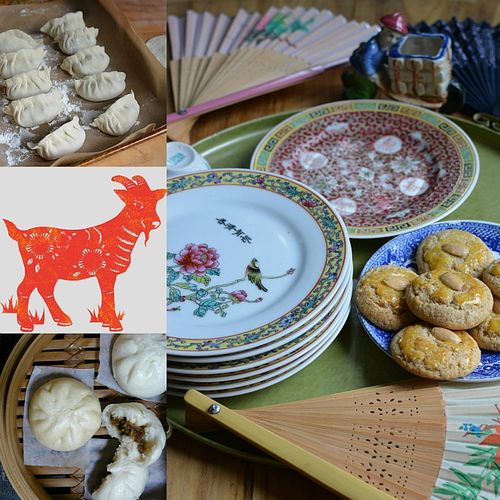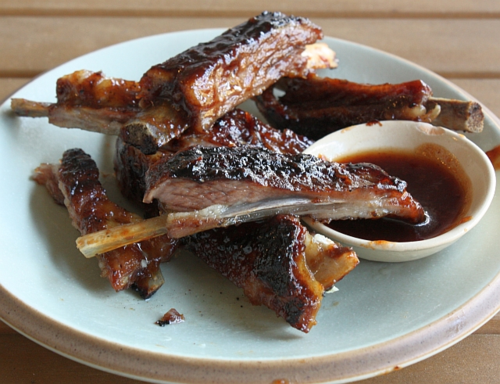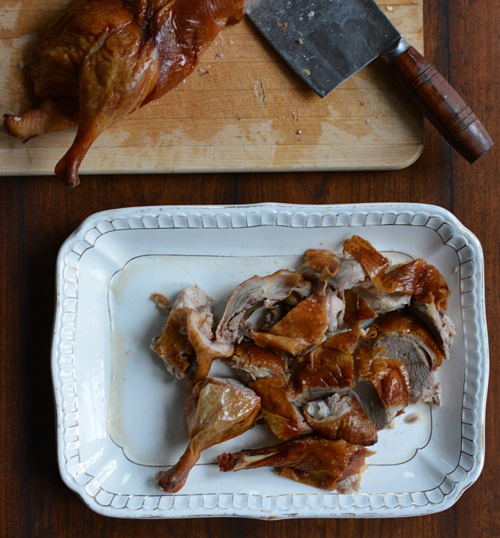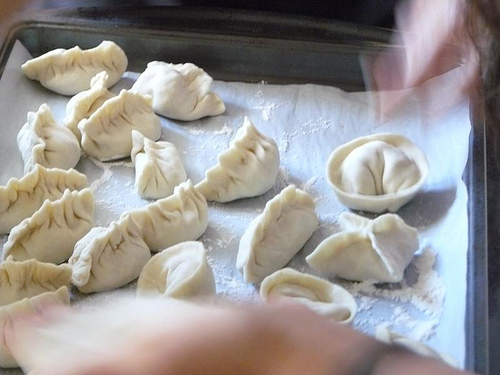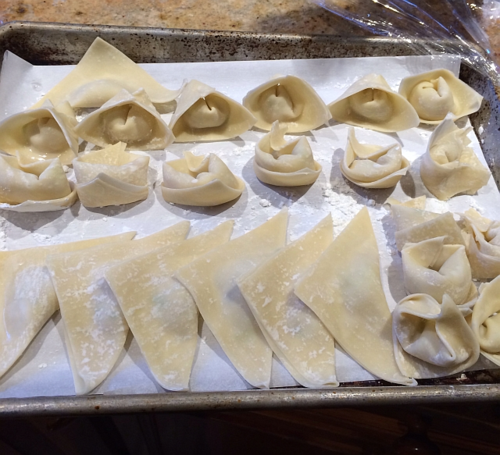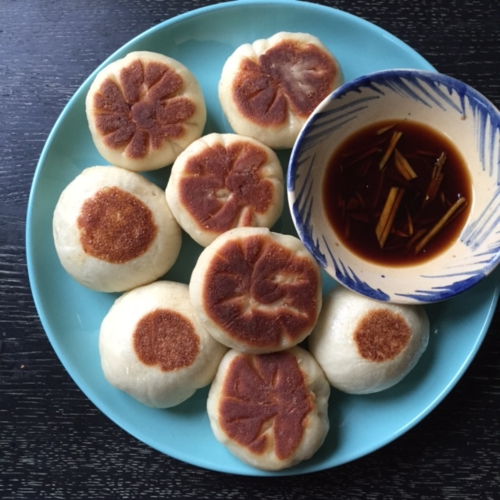Get ready for the Year of the Goat! It starts tomorrow, Thursday, February 19 – the first day of the Lunar New Year. For Asian people who celebrate it, it’s like all the major western holidays rolled into one. People get giddy, nostalgic, sentimental. It’s also when people actually get to take time off from work. You don’t have to be of Asian ancestry to celebrate Lunar New Year. Just get into the spirit of renewal, relaxation and rebooting. Get a few friends together for a Chinese dumpling-centric celebration. Here’s a quick low-down and some tips to help take the edge off.
When: The window for holding Lunar New Year parties is weeks. That’s because people traditionally take a month off to visit with their families and friends. For your event, pick a date between now and say, the second week of March.
How: It can be casual or formal but since dumplings are involved, consider a weekend lunch based around dim sum brunch. Or, have a cocktails and dumplings party. Or, just invite people over for a dumpling making party. A dumpling potluck is always fun and full of cool surprises.
Decorations: Create a cheery occasion. It can be as simple as branches of blossoms that you cut off a tree, anything red and gold, or a pyramid of tangerines. Sources for fun and festive Lunar New Year decor include Cost Plus World Market and Chinese grocery stores (I am using my Kitchen God stuff as decorations).
Get favors for guests, like foil-wrapped coins or other favorite candies. Start the year out sweet. I like to serve on Asian-esque dishware that I’ve bought while traveling and at antique and second-hand stores.
Food: Don’t be frightened by the thought of planning a themed menu. Create a balanced, well-paced meal of things that you make ahead and things that you can cook and/or assemble to serve.
Given that dumplings are the main focus for Chinese-focused events, add an Asian salad or two, noodle dish like vegetarian dan dan noodles or spicy peanut noodles. Since it’s the year of the goat/sheep, include a finger good like these tamarind-glazed lamb ribs. You’ll get major wows by roasting a whole duck.
For the dumplings, consider these options:
Make dumplings as a group: Go rustic and authentic with Chinese poached dumplings, called shuijiao, a classic northern (think Beijing) Chinese new year food. You make the dough (use the basic dumpling dough in Asian Dumplings or the gluten-free dumpling dough on VWK) and filling in advance.
Gather your friends and coach them to roll out dough, fill and cook. If you don’t want to tackle dumpling dough from scratch, go ahead and use store bought wrappers. From my experiences with teaching classes and having dumpling parties at my house, have liquor to fuel the merriment. Gobbling up as many dumplings as you can is the reward.
If boiled dumplings sounds boring (believe me, they are not), panfry some for pot stickers. You can make wontons too, as they’re super simple. Kids can get involved in making dumplings; they have small fingers and aren’t afraid to mess up.
Cook a Dumpling Many Ways: Chinese dumplings have built-in versatility so you can boil, steam, panfry and deep-fry them. Depending on the number of guests you have, make a single or double batch of the pork and napa cabbage dumplings (Asian Dumplings, page 31). Poach/boil half of them, panfry the other half into pot stickers. It's great to compare and contrast the textural differences that you get from the two cooking methods. If there’s oil for deep-frying, drop a few in to see what happens (they taste like fried pizza rolls!).
Thaw and cook dumplings: Stash some dumplings in the freezer to seed the party. Siu mai are easy. Steamed or baked bao work beautifully. With the baked bao, underbake them slightly and don’t glaze them with honey until after rebaking/reheating them in a 350F oven.
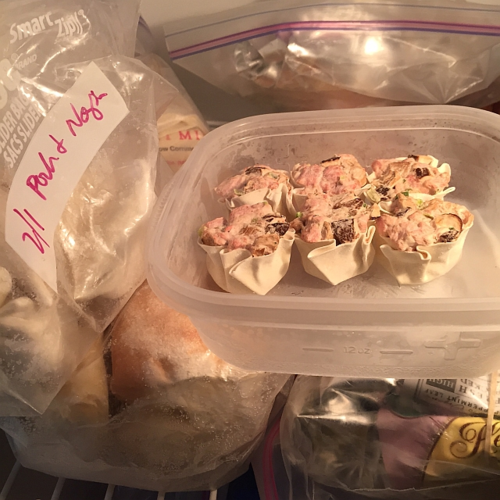
You can freeze uncooked dumplings destined for boiling, steaming and panfrying too. Partially thaw them before cooking. The daikon radish cakes (luo bo gao) can be frozen and then panfried.
Reheat dumplings: Any panfried dumpling can be re-panfried for serving to guests. That is, you can panfry potstickers in advance and then put them in a skillet with a tiny bit of water to resteam (use a lid) and fry (uncover) – it’s just like partially repeating the original panfrying process.
The downside of re-panfried dumplings is that you lose the juiciness as it’s been absorbed by the dumpling wrapper. But I find that guests don’t mind as they didn’t have to do the work. Plus, homemade dumplings outshine all others.
With exception to delicate dumplings like Shanghai soup dumplings (xiao long bao), most steamed dumpling can be gently and briefly re-steamed over boiling water. If you overdo the steaming, the skin may break. Re-steaming can be done in the microwave oven with a damp paper towel to cover.
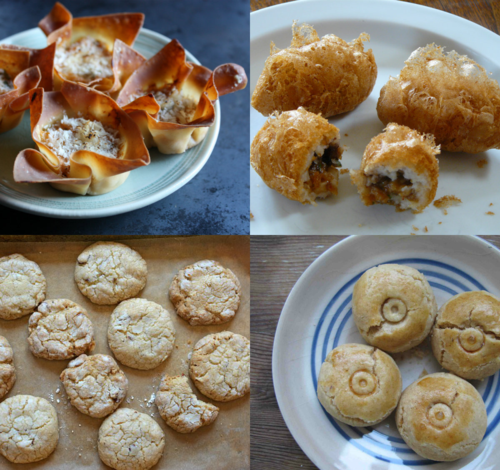
Also consider making a dumpling or two that can be revived in the oven. That way, you’re not cramped on the stovetop. Use a rack set on a baking sheet and an oven preheated to 350F. Taro puffs (wu gok in Cantonese) are splendid reheated in the oven, as are Shanghai radish puffs. Baked deviled Sriracha crab Rangoon work well too if deep-frying isn’t your thing.
End with fresh fruit, candies, sweetmeats and a cookie, such as Belinda’s amazing almond cookies or Chinese peanut cookies -- which you can bake in advance, even make the dough and keep it frozen!
There are endless possibilities for celebrating the Lunar New Year. What’s important is taking the time to do a little something with people you care about.
Related posts: Good luck dumplings round-up (if you want to double down on good fortune food)
Got any tips, ideas or experiences to share?













